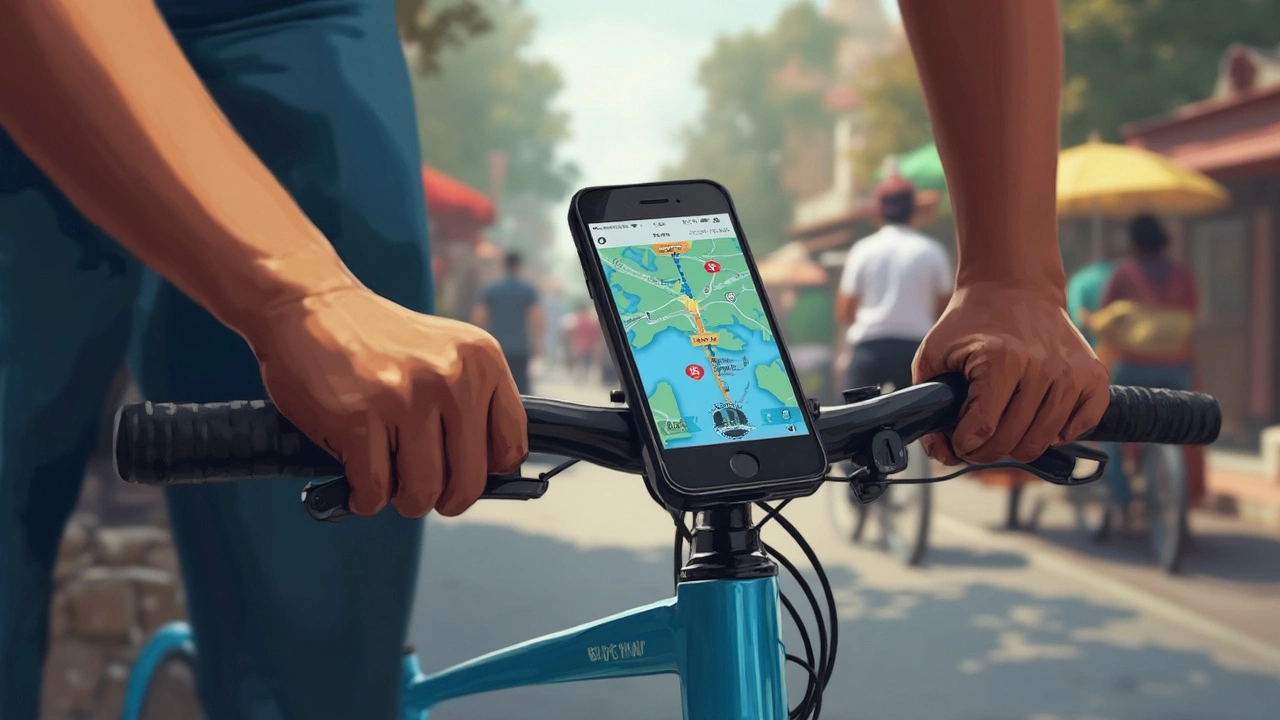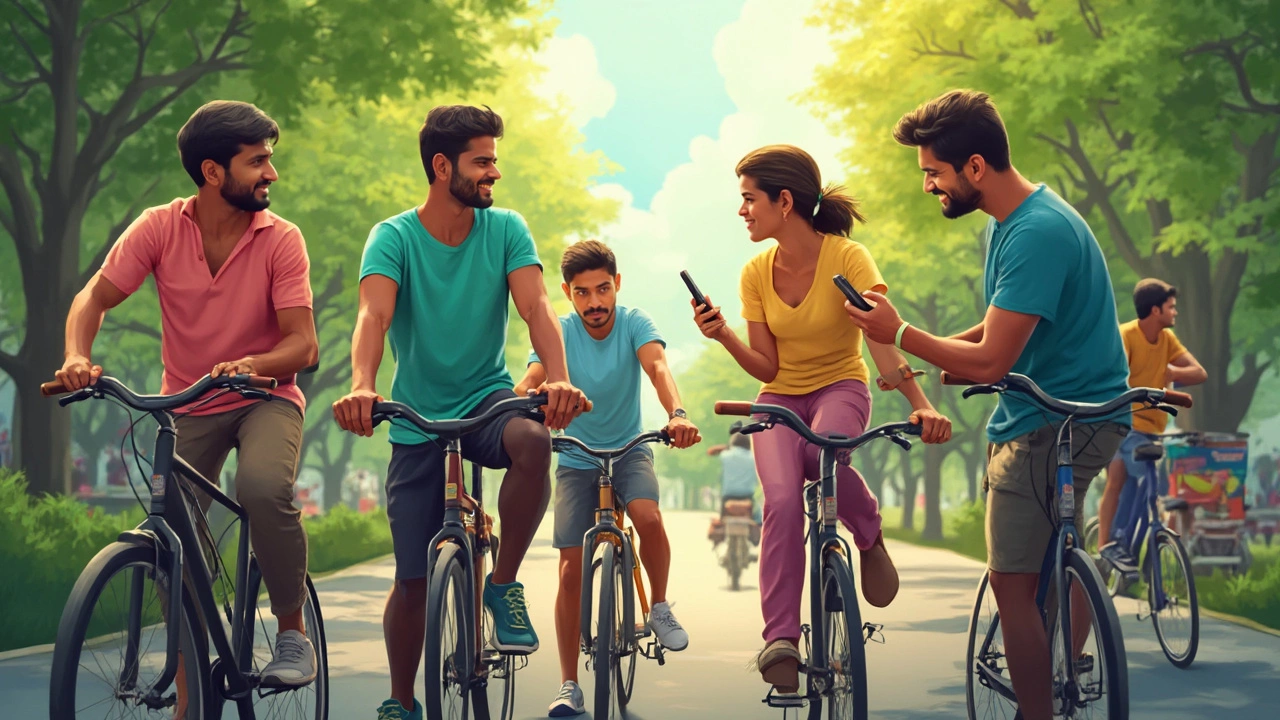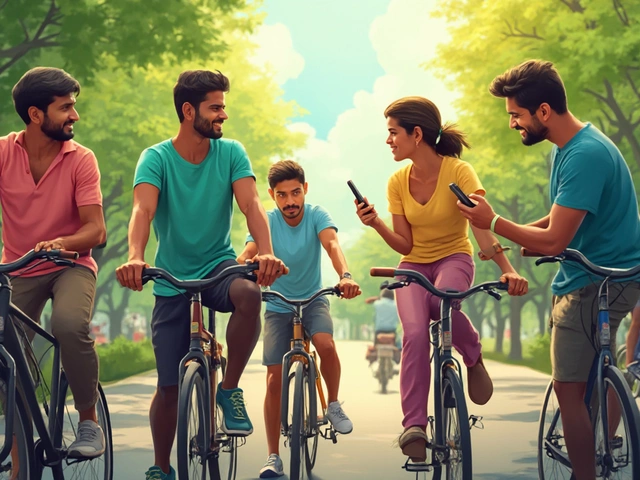Ever tried planning a cycling route and just ended up frustrated by a patchy map or a dead GPS? That’s pretty common, especially with free tools that look great but choke right when you need them. Bikemap claims to fix that—with lots of features targeting everyone from city commuters to hardcore bikepackers. But is it really that good for everyday riders or just another cycling app with flashy marketing?
If you’ve got tired legs and don’t want to waste time on lousy routes, you’re in the right spot. Here’s my honest take, after messing with Bikemap week after week for my family rides (my son Tobias is a rookie route tester) and long solo escapes out of the city. We’ll get right to what works—and what’s meh—so you don’t blow cash or hours on the wrong map.
- What Does Bikemap Actually Offer?
- Where Bikemap Shines (And Where It Doesn’t)
- Pricing: Free vs Premium (Is It Worth Upgrading?)
- Tips for Using Bikemap Like a Pro
What Does Bikemap Actually Offer?
If you’re new to the cycling world or looking to upgrade your route game, you’ll want to know what Bikemap really brings to the table. The standout thing: it’s a huge library of user-made cycling routes—over 11 million, to be exact. Whether you’re grinding up mountain roads, exploring city parks, or just trying not to get lost on a weekend ride with your kid, it’s got options for just about every riding style.
Bikemap isn’t just about maps, though. It packs a bunch of features that actually help you before, during, and after your ride. Here’s what you get:
- Bikemap lets you search, browse, and filter routes by distance, surface, elevation, or type—lots of filters, so you don’t waste time sifting through stuff that doesn’t fit your bike or skill level.
- Turn-by-turn voice navigation is built in. You throw your phone in a handlebar mount, hit start, and it’ll talk you through every turn without needing to stare at the screen.
- Offline maps (for Premium users), which honestly saves the day when phone signal vanishes halfway down a country lane. No more guessing if you’re about to take a wrong turn into a field.
- Real-time ride stats: see speed, distance, and calories burned as you pedal, just like a fitness tracker.
- Route reporting: Users can flag closed roads, sketchy sections, or anything that needs updating, so the maps don’t go stale like some other platforms.
- Sync rides with other fitness apps (like Strava or Apple Health) if you’re into tracking all your activity in one spot.
Bikemap works on iOS, Android, and web, so you can plan a ride on your laptop and then pull it up on your phone. No device drama.
“Bikemap’s large and active user base is its real strength—real cyclists are the ones putting in new routes and updates every day.” — Cycling Weekly, July 2024
If you like seeing numbers, here’s how Bikemap stacks up in a few core areas:
| Feature | Free Version | Premium |
|---|---|---|
| Available Routes | 11+ million | 11+ million |
| Offline Maps | No | Yes |
| Turn-by-Turn Navigation | Yes | Yes |
| Route Planning (web & app) | Yes | Yes |
| Advanced Filters | Yes | Yes |
| Custom Route Export (GPX/KML) | No | Yes |
| Ad-free Experience | No | Yes |
A quick tip: you don’t need to go Premium just to try it out. The free stuff covers the basics, so you can play around before committing. Easy win if you’re on the fence or just want to make your next family ride way less stressful.
Where Bikemap Shines (And Where It Doesn’t)
Bikemap nails some things that make it a go-to for a lot of riders. Its biggest flex? Sheer number of routes. There are over 11 million cycling routes worldwide on the platform, covering everything from city loops to gnarly mountain climbs. The route filtering is solid—you can sort by elevation, distance, surface, and even bike type. No guesswork when you’re packing your hybrid versus your road bike.
The app also does a good job with turn-by-turn voice navigation, even offline if you grab a premium plan. That came in clutch on a rainy trip outside of phone signal range with Tobias riding shotgun on his own bike. Plus, Bikemap’s elevation profiles really help if you like knowing what’s coming (saves your legs from surprise hills).
Bikemap is a standout because of "the vast and ever-growing community-generated route library, which is hard to match for exploration-focused riders." – Cycling Weekly, 2024
Community features are a nice touch, too. Reviews and live comments act as quick reality checks, so if a path is closed or wrecked by construction, someone’s probably already tipped you off. And map data updates faster than old-school printed guides—Bikemap pushes new user info constantly.
It’s not all sunshine, though. If you’re in rural areas or less-popular regions, coverage can get spotty. I noticed some routes looked perfect on the map but ended in dead ends or farm gates—guess not all 11 million are winners. Also, the app occasionally pushes routes along busy car roads; not great if you’re riding with kids.
- Bikemap shines with user-generated routes for city and well-trodden areas.
- Easy offline access helps when your cell signal’s garbage.
- Voice navigation wins on tricky city corners, less so for complicated trails.
- Be ready to double-check routes in remote or less-mapped locations.
Just so you can see how it stacks up in what matters most, here’s a quick look:
| Feature | Bikemap | Komoot | Strava |
|---|---|---|---|
| Global Routes | 11 million+ | ~9 million | ~5 million |
| Offline Maps | Yes (Premium) | Yes (Paid) | Partial (Some features require paid plan) |
| Real-Time Navigation | Yes | Yes | No (mainly tracking) |
| Community Edits | Yes | Yes | Limited |
If you mostly ride in bigger towns or touristy spots, Bikemap’s got your back. For rural explorers or folks wanting 100% precise planning, expect to cross-check major routes before leaving home.

Pricing: Free vs Premium (Is It Worth Upgrading?)
Bikemap gives you a free version and a Premium version, and the differences are honestly pretty sharp. The free version is decent for messing around with basic routes, but you’ll hit a wall fast if you want reliable, everyday Bikemap navigation—especially offline.
Here’s the real breakdown you get right now (checked as of May 2025):
| Feature | Free | Premium |
|---|---|---|
| Route Planning | Yes (limited functions) | Yes (full functions, advanced options) |
| Turn-by-Turn Navigation | Yes (online only) | Yes (offline & online) |
| Offline Maps | No | Yes |
| Route Export (GPX, KML) | No | Yes |
| Bike Type Filters | No | Yes |
| Advanced Map Layers (elevation, surfaces) | No | Yes |
| Ad-Free Experience | No | Yes |
The Premium plan costs around $39.99 a year or $8.99 monthly, but there’s always a sale popping up. They also throw in a 7-day trial, which is an easy way to see if the extras—like offline use and better route filtering—are really worth it for you.
If you only ride city loops or stick to short trips somewhere with signal, free is going to cover your basics. But if you ride outside cell range, want better control over your rides, and hate ads, Premium pays off pretty fast. I couldn’t pull up Tobias’ favorite forest trail in the rain last fall without offline maps, and it was a pain. Premium would have saved the day.
- Use your 7-day free trial during a busy riding week—test all the bells and whistles before shelling out.
- If you need to export to Garmin, Wahoo, or just want that GPX file for backup, Premium is a must.
- Look for family sharing deals—sometimes Bikemap offers discounts for more than one rider.
The value comes down to how you ride and if you need ultra-reliable routes and navigation, especially offline. Daily commuters in cities? Stick with free a bit. Adventure cyclists, regular tourers, tech geeks—Premium actually pulls its weight.
Tips for Using Bikemap Like a Pro
Getting the most out of Bikemap isn't just about downloading the app and hitting 'Go.' Here are some legit ways to make your rides smoother, whether you're cycling in your own neighborhood or planning a cross-country adventure.
- Bikemap's route suggestions are based on real user data—before you trust the first pick, check the route’s popularity and recent user ratings. If a route has lots of positive comments, it’s usually reliable.
- Save your routes for offline use before you head out. This is a must if the cell signal is spotty – especially when you’re riding out of town or through wooded areas. To do this, tap the download arrow on your planned ride.
- Use the elevation profile feature. It saves you from brutal hills (or preps you if you’re up for a challenge). Tap on the elevation graph to see climb and descent details for each route.
- Check for road type filters. If you’re on a road bike, you don’t want surprise gravel. There’s a toggle to show paved vs unpaved sections – a lifesaver if you’re not on a mountain bike.
- Sync up with your favorite fitness tools. Bikemap can connect with Apple Health or Garmin, so all your ride stats show up in one place. Look in profile settings for syncing options.
For a quick glance at what you can do with the free version vs Premium, here’s a real summary:
| Feature | Free | Premium |
|---|---|---|
| Offline Maps | No | Yes |
| Route Export (GPX/KML) | No | Yes |
| Advanced Navigation (Voice, Turn-by-Turn) | Basic | Full |
| Live Tracking | No | Yes |
| Ad-Free Experience | No | Yes |
If you're riding with your kid or in a group, try the live tracking feature—Premium lets friends and family watch your ride in real-time, which is not just cool but can be a real safety booster. And here’s a little trick: if you’re planning a week of rides, stack them as a "route collection" so you’re not hunting through your history each day.
One last thing—update your app often. They add new map data and features all the time, so an old version can let you down. Trust me, speaking from a morning when half my trail was "just trees" according to the app.

